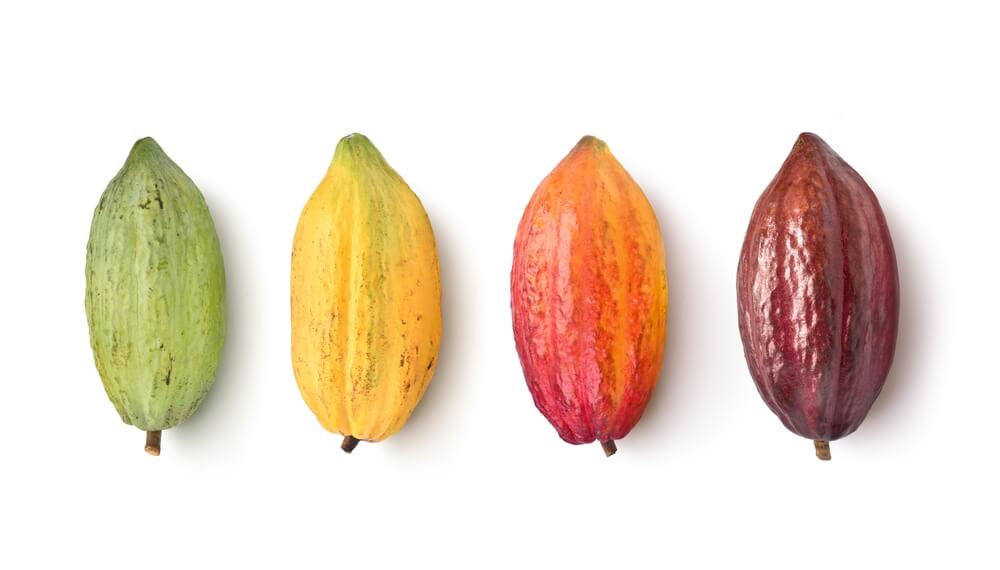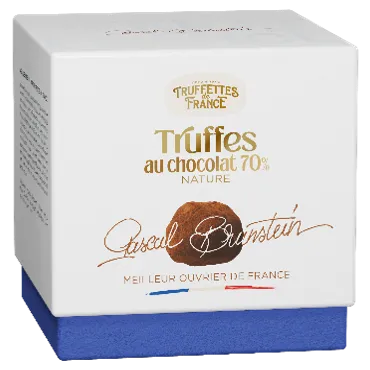Definition : Forastero cocoa

Forastero cocoa is a species ofcocoa tree whose beans are used to produce chocolate. Native to Central and South America, it accounts for around 80% of the world's cocoa production. Let's find out more about this tree, its characteristics and its role in chocolate production.
Characteristics of forastero cocoa
Forastero cocoa trees are generally larger and more robust than those of other cocoa species, such as Criollo and Trinitario. They grow mainly in West Africa, South America and Southeast Asia. They flower and set fruit throughout the year, enabling a regular harvest of cocoa beans.
Forastero cocoa is considered less delicate and complex in terms of flavor than other cocoa species. Nevertheless, because of its vigor, disease resistance and high productivity, it remains highly prized by growers and makes up the majority of cocoa used in the chocolate industry.
Forastero cocoa beans
Forastero cocoa beans are generally larger and less oval than those of other species, with a color that varies from dark brown to violet. They have a thick shell and a pronounced bitterness. Their cocoa butter content is slightly lower than that of other varieties such as Criollo, making them less creamy and more solid after processing into chocolate.
Despite their more robust, less refined taste, forastero cocoa beans are widely used in chocolate production, mainly for economic reasons. In fact, they are resistant to disease and parasites, guaranteeing a consistently high yield for producers.
Harvesting forastero cocoa
The cultivation and harvesting of forastero cocoa beans follows similar stages to those of other cocoa species. It is a painstaking, laborious process carried out manually by farmers.
Pod harvesting
Cocoa fruit, known as pods, are harvested twice a year, during periods of rain and drought. Farmers cut the ripe pods with a special stick or machete to avoid damaging the tree's branches.
Bean extraction
Once the pods have been harvested, they are opened with a machete, and the cocoa beans and pulp are extracted by hand. The beans are then placed in baskets or sacks for transport to the fermentation site.
Fermentation and drying of forastero cocoa beans
The next steps in the process of producing chocolate from forastero cocoa beans are fermentation and drying. These phases are crucial for developing the cocoa's aroma and sensory characteristics.
Fermentation
Fermentation of cocoa beans is a key stage in the development of chocolate's aromatic profile. The beans, with their pulp, are placed in wooden crates, barrels or jute sacks and covered, for 5 to 7 days. The temperature gradually rises during this period, and the sugars in the pulp are transformed into alcohol and then acetic acid. This kills any remaining germs on the beans and releases their aromas.
By the end of fermentation, the color of the beans will have changed from purple to brown, and their flavor will be less bitter and more chocolaty.
Drying
After fermentation, the beans are spread out to dry, usually in the sun. This stage lasts from 5 to 15 days, depending on weather conditions and the drying method used. Drying removes excess moisture from the beans and stabilizes their flavors.
Marketing and use of forastero cocoa
Once the forastero cocoa beans have been fermented and dried, they are sold on the local or international market. They are often blended with other cocoa varieties to obtain a chocolate coating with the specific characteristics desired by manufacturers, such as texture, taste and cost.
Forastero cocoa is widely used in chocolate production, including chocolate bars, bars and confectionery. It can also be powdered to make hot or cold drinks, such as hot chocolate and milkshakes, or used in cooking to prepare cakes, mousses and other desserts.
In short, forastero cocoa accounts for a significant proportion of the world's cocoa production, thanks to its disease resistance, high productivity and affordability. Although it is not considered to have as fine and delicate a flavor as some other cocoa varieties, it nevertheless offers a solid basis for the manufacture of chocolates and other cocoa-derived products.





